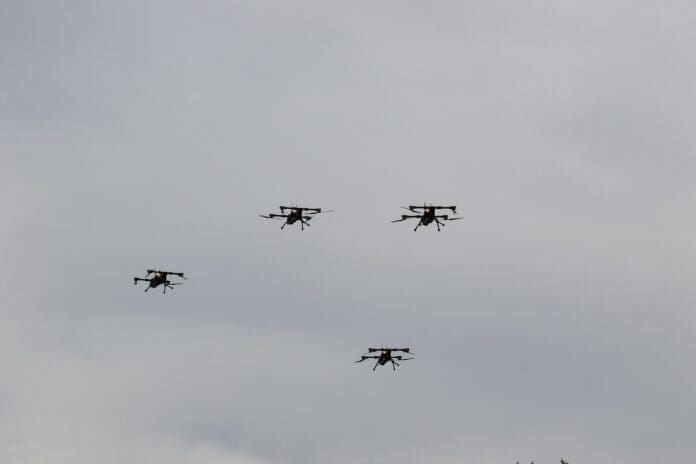This post is also available in:
 עברית (Hebrew)
עברית (Hebrew)
The US Air Force is advancing efforts to enable drone swarms to operate in environments where satellite navigation is denied or jammed. A recent request for information (RFI) from the Air Force Research Laboratory (AFRL) outlines plans to develop high-precision timing systems that allow unmanned aerial systems (UAS) to coordinate without depending on the Global Positioning System (GPS).
At the core of the project is a system known as the Joint Multi-INT Precision Reference (JMPR), designed to integrate Next Generation Atomic Clock (NGAC) technology. The aim is to achieve picosecond-level timing stability and sub-nanosecond accuracy, allowing distributed drone networks to synchronize movements, communications, and data sharing in contested environments.
AFRL is focused on developing a decentralized PNT (Position, Navigation, and Timing) architecture, where drones can generate local timing references using onboard sensors and maintain formation by syncing with nearby aircraft. The concept allows drones to establish spatial awareness and improve accuracy as more systems connect.
This capability becomes especially relevant in light of recent conflicts, where GPS jamming and spoofing have disrupted operations. Russian forces in Ukraine and Chinese developments in electronic warfare have demonstrated how dependent current systems are on satellite-based navigation. The proposed solution would enable drones to remain operational even in highly contested or jammed environments.
The Air Force has outlined several technical goals for the program:
- Sub-nanosecond timing accuracy to enable real-time synchronization across swarms
- Resilience against electronic interference, especially GPS disruption
- Scalability to support swarms ranging from a few drones to several hundred
- Strict SWaP (Size, Weight, and Power) compliance for integration into small platforms
- Support for mission-critical functions such as sensor fusion, targeting coordination, and distributed intelligence sharing
This effort could have direct implications for both offensive and defensive drone swarm tactics. Precision-timed operations would allow swarms to function as cohesive systems, rather than as loosely coordinated individual drones.


























